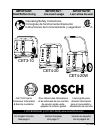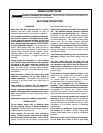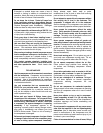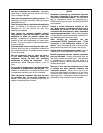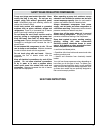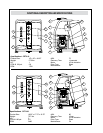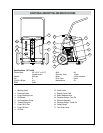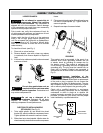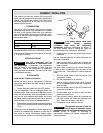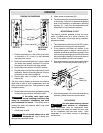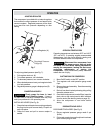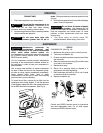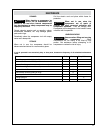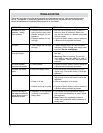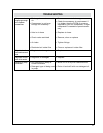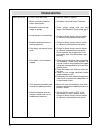
5
sAfety rules for eleCtrIC ComPressors
Power cord plugs must match the outlet. Never
modify the plug in any way. Do not use any
adapter plugs with earthed (grounded) power
tools. Unmodied plugs and matching outlets will
reduce risk of electric shock.
Avoid body contact with earthed or grounded
surfaces such as pipes, radiators, ranges and
refrigerators. There is an increased risk of electric
shock if your body is earthed or grounded.
Do not abuse the cord. Never use the cord for
carrying, pulling or unplugging the power tool.
Keep cord away from heat, oil, sharp edges or
moving parts. Replace damaged cord immediately.
Damaged or entangled cords increase the risk of
electric shock.
Do not expose this compressor to rain. Do not
use in damp or wet locations. Moisture increases
the risk of electric shock with this equipment.
Do not touch plug with wet hands. Moisture
increases the risk of electric shock with this
equipment.
Keep all electrical connections dry and off the
ground. Do not allow electrical connections
to lay in water or in such a position where
water could come into contact with cord and
connection. Moisture increases the risk of electric
shock with this equipment.
When operating a power tool outdoors, use an
extension cord suitable for outdoor use and with
correct amperage capacity. Use of a cord rated for
outdoor use reduces the risk of electric shock.
Always disconnect compressor from power
supply, vent air tanks, and allow compressor to
cool before servicing. Compressors with automatic
pressure controls can restart at any time.
Always turn off the motor when not in use and
before moving compressor. Stopping the motor
prevents unintentional starting of the compressor.
Some dust created by power sanding, sawing,
grinding, drilling, and other construction
activities contains chemicals known to cause
cancer, birth defects or other reproductive harm.
Some examples of these chemicals are:
• Lead from lead-based paints,
• Crystalline silica from bricks and cement and other
masonry products, and
• Arsenic and chromium from chemically treated
lumber.
Your risk from these exposures varies, depending on
how often you do this type of work. To reduce your
exposure to these chemicals: work in a well ventilated
area, and work with approved safety equipment, such
as those dust masks that are specially designed to
lter out microscopic particles.
sAVe tHese InstruCtIons



